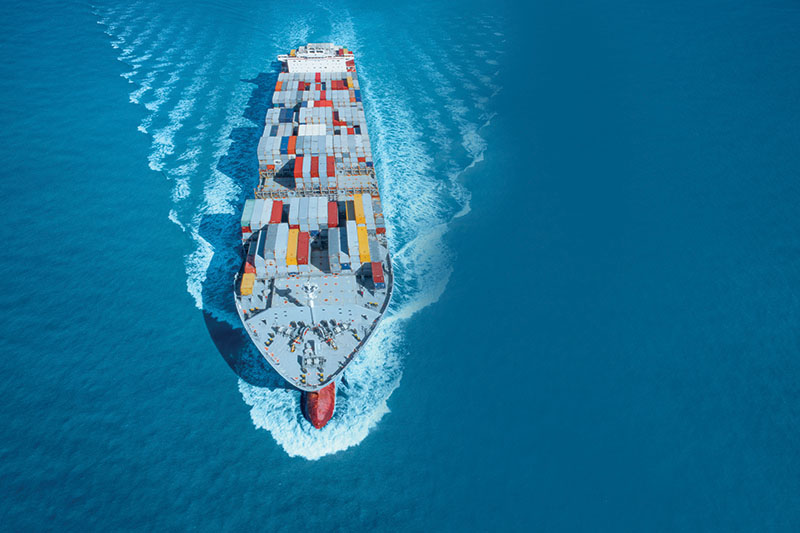More cargo at risk of diversion from U.S. West Coast to British Columbia?
For intact intermodal cargo, the British Columbia ports have significant route cost advantages as high as $600 per container over U.S. West Coast ports.

Following a strike by dockworkers that lasted for one month and paralyzed operations at Canadian West Coast cargo gateways late last summer, Resilience360 research indicates that British Columbia ports of Vancouver and Prince Rupert continue to experience disruption ranging from port congestion to rail car shortages.
“While the strike ended more than eight weeks ago, ocean and rail dependent supply chain operations across Canada are unlikely to fully normalize before December,” says Neza Kricaj, Supply Chain Risk Analyst, Resilience360. “Logistics Managers were therefore advised to adjust their routes and shipments accordingly, and explore options to divert cargo to alternative modes of transportation wherever possible.”
But this does not mean that U.S. West Coast will necessarily profit by Canada’s woes, she adds
“In the short term, there might be some expedited ocean services that bypass the Canada, but most large vessels on West coast rotations call first at the Canadian ports after crossing from East Asia.”
Resiliance360 further maintains that in the long term, Canadian ports will not only retain a cost and time advantage, but also more capacity as they expand terminals to accommodate the new generation of Mega-vessels.
Now a new Mercator study notes that U.S. West Coast ports have been experiencing a loss of market share of discretionary cargo to Vancouver and Prince Rupert for well over a decade.
Mercator’s study focuses solely on intact intermodal cargo – an important segment of the cargo market comprising containers that are shipped directly by rail from vessels to internal U.S. markets.
Mercator estimates that U.S. West Coast ports handled 2.85 million twenty-foot equivalent units (TEUs) of intact intermodal cargo in 2019. The ports of Vancouver and Prince Rupert, which have steadily eroded U.S. West Coast market share for intact intermodal cargo over the past five years, will have the capacity to handle at least 400,000 TEUs of new capacity by 2022.
This is roughly equivalent to 15 percent of the intact intermodal cargo currently flowing through San Pedro Bay and the Puget Sound, according to Mercator. The volume that is at risk could grow even higher as the Canadian ports expand their capacities in coming years.
For intact intermodal cargo, the British Columbia ports have significant route cost advantages as high as $600 per container over U.S. West Coast ports. This cost advantage is due to significantly lower rail rates charged by the Canadian railroads, as well as lower terminal costs to move the containers from ships to trains.
The Canadian ports’ cost advantage is even greater due to surcharges imposed at U.S. gateways, including the Harbor Maintenance Fee applied to carriers at West Coast ports and a transit fee for cargo in Southern California to access the Alameda Corridor.
“The U.S. West Coast ports continue to be the largest North American gateway for Asian imports, but that lead is being eroded not just by U.S. ports in the Gulf and East Coasts, but also by the two major ports in British Columbia,” said PMA CEO Jim McKenna.
He observes that while the intact intermodal cargo identified in the Mercator study may account for a small percentage of our overall volume, it’s still hundreds of thousands of containers each year representing millions of dollars in economic activity.
“This growing source of competition for valuable discretionary cargo is yet another wake-up call, especially for the Ports of LA, Long Beach, Seattle and Tacoma where most intermodal cargo is currently handled,” warns McKenna.

Article Topics
Ports News & Resources
U.S.-bound import growth track remains promising, notes Port Tracker report Q&A: Port of Oakland Maritime Director Bryan Brandes Signs of progress are being made towards moving cargo in and out of Baltimore New Breakthrough ‘State of Transportation’ report cites various challenges for shippers and carriers in 2024 Industry experts examine the impact of Baltimore bridge collapse on supply chains Port of Baltimore closed indefinitely to ships after 1.6-mile Key Bridge collapses following maritime accident February and year-to-date U.S. import growth is solid, reports S&P Global Market Intelligence More PortsLatest in Logistics
April Services PMI contracts after 15 months of growth, reports ISM 2023 industrial big-box leasing activity heads down but remains on a steady path, notes CBRE report U.S. rail carload and intermodal volumes are mixed in April, reports AAR Q1 U.S. Bank Freight Payment Index sees shipment and spending declines S&P Global Market Intelligence’s Rogers assesses 2024 import landscape Pitt Ohio exec warns Congress to go slow on truck electrification mandates Q1 intermodal volumes are up for second straight quarter, reports IANA More LogisticsAbout the Author
Subscribe to Logistics Management Magazine

Find out what the world's most innovative companies are doing to improve productivity in their plants and distribution centers.
Start your FREE subscription today.
May 2024 Logistics Management

Latest Resources














